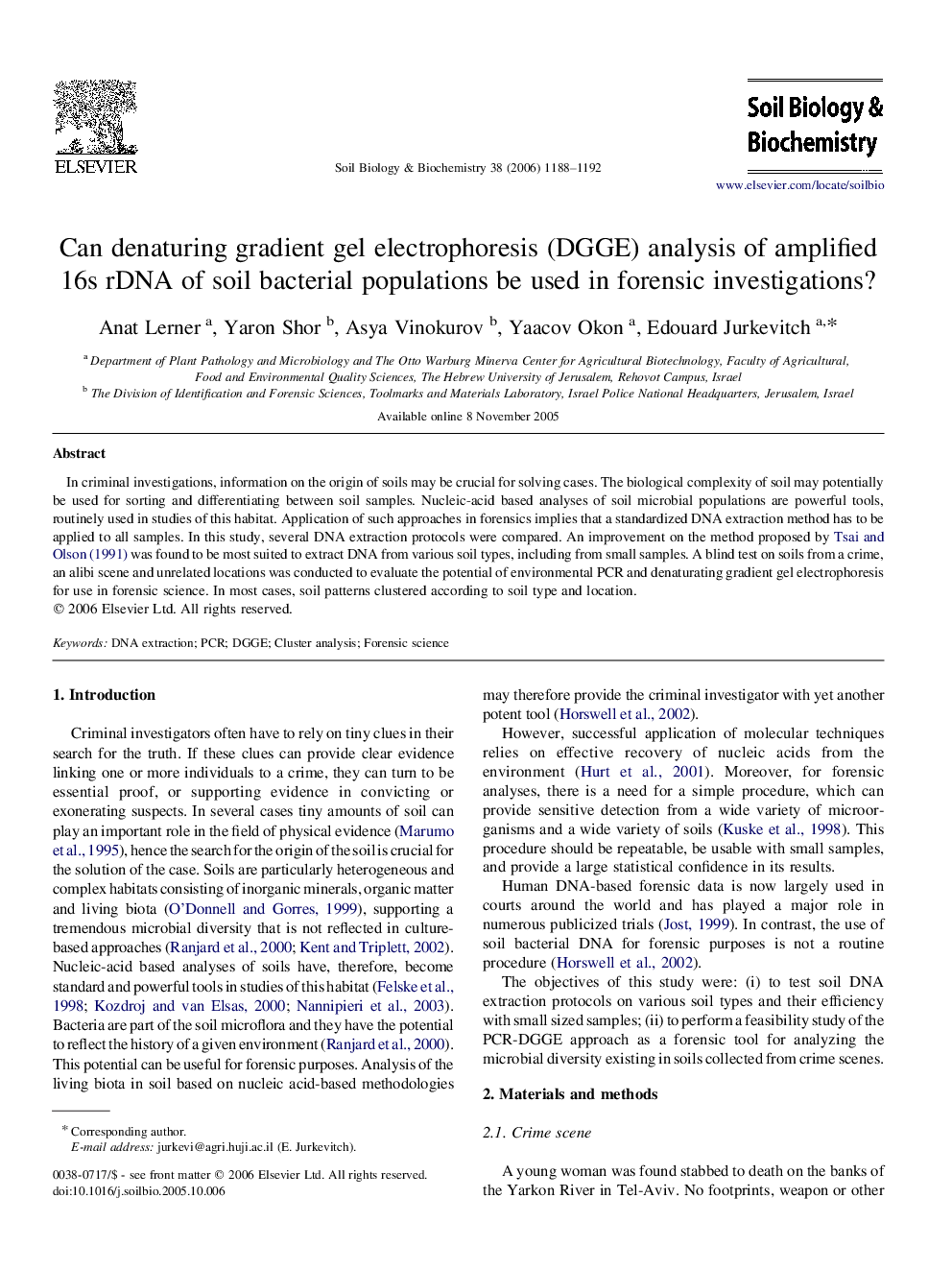| Article ID | Journal | Published Year | Pages | File Type |
|---|---|---|---|---|
| 2026639 | Soil Biology and Biochemistry | 2006 | 5 Pages |
In criminal investigations, information on the origin of soils may be crucial for solving cases. The biological complexity of soil may potentially be used for sorting and differentiating between soil samples. Nucleic-acid based analyses of soil microbial populations are powerful tools, routinely used in studies of this habitat. Application of such approaches in forensics implies that a standardized DNA extraction method has to be applied to all samples. In this study, several DNA extraction protocols were compared. An improvement on the method proposed by Tsai and Olson (1991) was found to be most suited to extract DNA from various soil types, including from small samples. A blind test on soils from a crime, an alibi scene and unrelated locations was conducted to evaluate the potential of environmental PCR and denaturating gradient gel electrophoresis for use in forensic science. In most cases, soil patterns clustered according to soil type and location.
